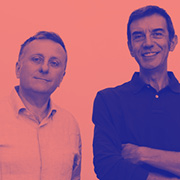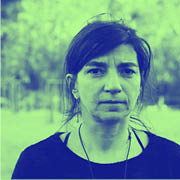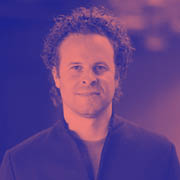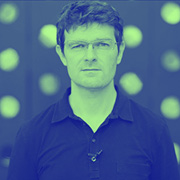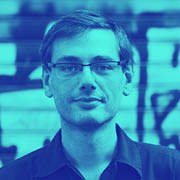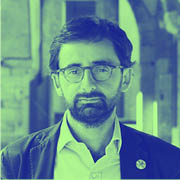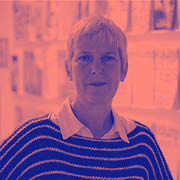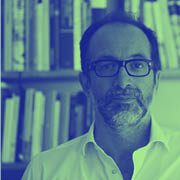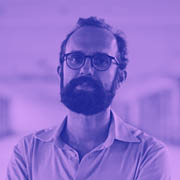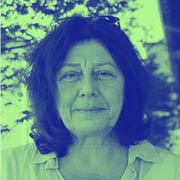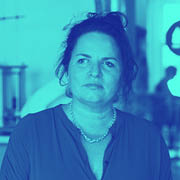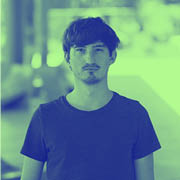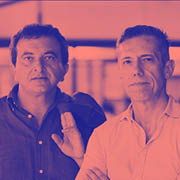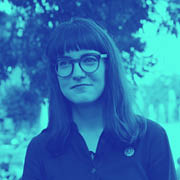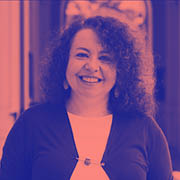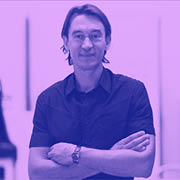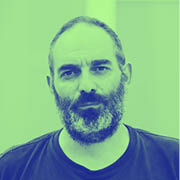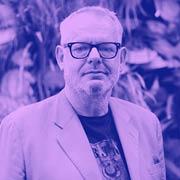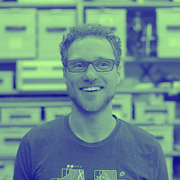RESILIENCY CONSULTANT
PIERO PELIZZARO
Piero Pelizzaro has been working on climate change policies and smart city and adaptation planning for the last eight years. He is the Project Manager of H2020 Lighthouse Project (Sharing Cities Program) at the Municipality of Milan and a member of the Milan Municipality Working Group responsible for developing the Urban Resilience Strategy for the city. He co-founded Climalia – a consulting company based in Italy, where he operates as Resilience Specialist. Piero is also an Acclimatise Associate.
TERMS
anthropocene
resilience
playable
sharing
NEW ECOLOGIES
ANTHROPOCENE
The anthropocene represents a critical geological era, which we have entered since the Nagasaki and Hiroshima bombings of 1945. With these bombings we saw the stark ability for human action to change the global condition and modify natural resource cycles and processes.
URBAN ASSETS
RESILIENCE
is critical to urban assets. Whilst overused, its fundamental meaning remains important. The development of infrastructure and new technology in the city must be designed to deal with risks in the external world.
DIGITAL TOOLKIT
PLAYABLE
The concept of playable is something that has really fascinated me because we, as people, generally enjoy the concept of play. Playful apps have become ingrained in everyday life and the potential exists to use these apps more productively. When we play, it can be not only for our own enjoyment, but also to support city and community development through collective engagement.
NEW COLLECTIVES
SHARING
is fundamentally a collaborative approach. This approach is something that has increasingly disappeared in the rapid rise of consumerist society in the post-war era. We have become an increasingly individualistic society but have reached a tipping point where greater collaboration is necessary to face global risks such as climate change, global terrorism and economic crises.
INTERVIEWED BY
GIANPIERO VENTURINI
Through various examples from Italy, Piero Pelizzaro makes a strong case for the need for thinking in terms of resilience.
website
CLIMALIA
climalia.eu
Find them on facebook
GV:
Is there any relation between your selected terms?
PP:
For those who are working with resilience in urban assets, these four terms do relate to the methods through which you can improve the quality of a community from a social perspective. So the link relates to the assets that are necessary within a community.
GV:
Which concept best describes the urban agenda that your selected four terms arise from?
PP:
At the moment, we are developing the notion of the ‘sharing city’, which includes the terms of resilience, the anthropocene, a playable attitude and the sharing collective as approaches. I see the agenda of the ‘sharing city’ as the overarching guide to these terms.
GV:
This project is about creating a ‘New Vocabulary of Terms’, what do you think defines the contemporary vocabulary and is there something that should change about it?
PP:
It is funny that the speed of communication in the era of social networks has created its own vocabulary. We live in a time where languages are mixed and where language is hard to keep pace with. Even a drunk person can ‘contribute’ to a vocabulary if their rantings are recorded and become viral, resonating across social networks. What is important for those working to advance communities, however, is to assist in explaining some important terms of our vocabulary and to properly define them so they are usable. Too often, people use terms from a singular understanding of its meaning and make comprehension just confusing. Donald Trump is one of them. He often speaks with little regard for the implications of what he is saying. In this context, I think this project is essential to further defining the general terms we utilise in discussing urban innovation and the urban drivers that we, as policy makers, seek to implement.
We live in a time where languages are mixed and where language is hard to keep pace with.
video
JOHAN ROCKSTRÖM
‘How we can all become
responsible stewards of Planet Earth’
link
STOCKHOLM RESILIENCE CENTER
stockholmresilience.org
GV:
Do you recall any positive or negative experiences you had with vocabulary in communication between disciplines - a moment when a word from a different discipline widened your understanding or when you were misunderstood because of lack a of common understanding?
PP:
In 2009, when I returned to Italy from Estonia where I had lived and worked with Johan Rockström, nobody was talking about resilience as Johan conceived of it. I went to a conference with public authorities and I brought up the term resilience, in response, one guy literally asked me if it was a cocktail!
Whilst funny in the beginning, we need to consider how such a term enters the vocabulary. Resilience became essential to getting funding for the city, private company or community. The concept of resilience also became something that was appropriated by different professions, each with their own singular perspective on its meaning, such as engineering which emphasized the materials perspective. In that respect, resilience is a fascinating term because you engage with so many different professionals with a single word laden with meaning.
I agree with Johan Rockström’s position on resilience, that business as usual is no longer an option. We cannot continue to exhibit the same behaviour that created our current global problems. A lot of people incorrectly think that resilience is about resistance – that we can still operate as we did before the crisis.
link
PIZZERIA RESILIENZA
lucianopignataro.it
link
TERRA DI RESILIENZA
terradiresilienza.it
GV:
The word ‘resilience’ has been overused in the past few years. It is one of the terms we use to introduce our vocabulary of terms. What do you think of the terms ability to be used in different contexts, with different meanings.
PP:
When we speak about resilience, we normally try to define the concept of resilience. Instead, I believe we should be talking about the story of resilience. With overused concepts perhaps it is lived experiences that can facilitate better understandings. For example, stories such a Gennaro Coppetta’s founding of ‘Pizzeria Resilienza’. ‘Pizzeria Resilienza’ is not just a pizzeria, it was a way to change the approach to sustainability. Gennaro developed this new idea because he collaborated with a cooperative named ‘Terra di Resilienza’ or ‘land of resilience’ who were starting to return to old farming traditions in the northern part of Campania. They started to cultivate the heirloom tomatoes that were lost during the past 50 years. Italy used to produce more than 100 kinds of tomatoes; nowadays we produce only five different kinds. They began to grow other vegetables that had been lost and Gennaro took the opportunity to find a market for their vegetables and transform their produce into a final product. ‘Pizzeria Resilienza’ became a place where they could deliver their produce. Now ‘Pizzeria Resilienza’ consists of three pizzerias across Salerno, hiring more than 10 people for each pizzeria. This is a successful new approach with a real link between farmer, producer and consumers.
With overused concepts perhaps it is lived experiences that can facilitate better understandings.
There is also the example of Bologna, which saw the first community developing a resilience plan in Italy. They developed this concept of the resilience plan along two main concepts. First one was the concept of sharing, or ‘collaboriamo’ for the common goods. The term common goods meant more than natural resources it also related to the ‘portico’ and the arcaded buildings Bologna is famous for. These are an essential part of the city, because they allow you to walk around even when it is snowing or raining – they are a vital urban asset.
So this ‘collaboriamo’ approach related not only to common goods but also common places where the arcades provided a space where you could encourage a new kind of business and city culture, whilst preserving some parts of the historical buildings in a new way.
The second pillar of the resilience strategy was to increase greenery in the city that was not really happening at a political level but was improving through local experience. Money was always lacking from the local authority for greening purposes, but in Bologna the retired people, began taking care of the green areas of the city. Similar to the ‘Pizzeria Resilienza’ example we see that it is the community and their sharing capability that can support the city in improving its resilience from a climate perspective, such as addressing urban heat island effects. I use these examples because sometimes the best way to define a term is to explain it through an experience and we need to improve the way in which we tell the story of resilience. The most difficult part of explaining a new concept is to do it in a way digestible for the community. We always find an opponent to a new concept but we are in a time of innovation and communication so we have to be able to speak with evocative stories and not simply with definitions.
GV:
In one of your lectures, you talk about Palermo as the most resilient city. Why Palermo? When can a city be defined resilient?
PP:
I was on a conference panel with Leoluca Orlando, the mayor of Palermo and someone asked him “Do you believe that Palermo is comparable to Amsterdam?” and he said “No, Palermo is comparable to Beirut, because we live with the same chaos as Beirut but the chaos is not a problem. We are part of the chaos and we are part of this ecosystem”. I didn’t understand at first but realized when I walked through the different parts of the city you see that there are still ancient buildings, damaged in WWII in which people are still living. A lot of people don’t have enough money to pay for electric bill but they always find a way to get electricity - not always legally. Some people continue to cook outside on a boiler on the street as it was in the past. It shows an ability to create something from nothing and this capability of resilience, to always find a solution, even if a time of permanent crisis defines Palermo.
Then you have these buildings in the city of Palermo and they were built with Arabic architectural elements. These buildings have peek windows on the top of the roof to let light enter and at the same time to improve the ventilation. Fountains reduced the impact of heat and you can find wonderful tubes that bring the cool wind through the building. So we can define a new resilience standard for buildings without having to define something new. We just have to recover a more intuitive, perhaps ancient approach to the climate. A further example of this is the city of Lisbon. Lisbon is now more advanced than Italian cities on urban infrastructures and buildings because it is able to use the ancient capabilities of buildings and enhance them with some innovation. Palermo and Lisbon are moving in the direction of a resilient city and so it is from the Mediterranean despite our tendency to define the Nordic cities as resilient. While I do love Rotterdam, Stockholm, London, they are building something new rather than recovering something old that also is a part of our historical background that needs preservation. So my opinion is Palermo and Lisbon are the main forgotten cities in Europe that have to be more known as resilient cities.
image
PALERMO
By Dom Dada
'Abandoned and revived building in the heart of Vuccirìa, Palermo'
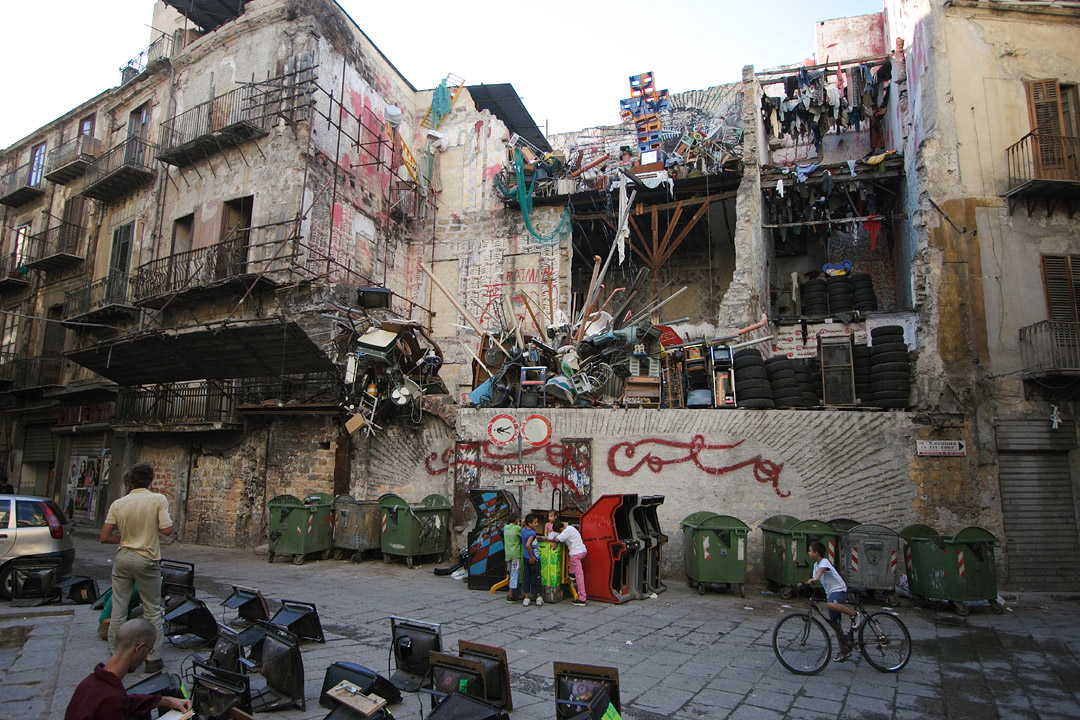

While I do love Rotterdam, Stockholm, London, they are building something new rather than recovering something old that also is a part of our historical background that needs preservation.
GV:
Yesterday we were talking about the green economy, today it is the circular economy, yesterday we were discussing the concept of sustainability and today we talk about resilience. What's next? Which other important concepts should we take into account when we think about the future of our cities?
PP:
When we think about new concepts for the future of our cities, we don’t have to define that future immediately. Instead we can use a holistic approach to the city. If you look at the evolution of the green economy, at first, the green economy was defined as a linear model for the growth of the economy and the need to find a balance in the use of natural resources. Then we widened our understanding, we expanded the green to blue, including water and waste and started thinking of its structure as a circle of resources, practices and behaviours. Out of this came the concept of the circular economy.
The circular economy is also a way in which we can reduce the production of waste and have business rethink its production processes because nowadays service has become a product. Larger companies look to develop their product not with an end-life anymore but as a product that can be continuously updated with new technology or with new software, or new capabilities. The hope is, in the future, we will transform our products in ways that can be updated and re-used without needing to be destroyed.
When we think about new concepts for the future of our cities, we don’t have to define that future immediately.
This is also a hope for the energy market. Until recently there were only the consumers but now we have prosumers, so even energy utilities are moving on from selling energy to providing services, which help us manage our energy consumption. The consumer pyramid is inverted with the product at the bottom and the outcome at the top. So we might see the future city as the outcome city, but we have to make the city a resilient one, focused on outcomes for our communities in order to be successful.
